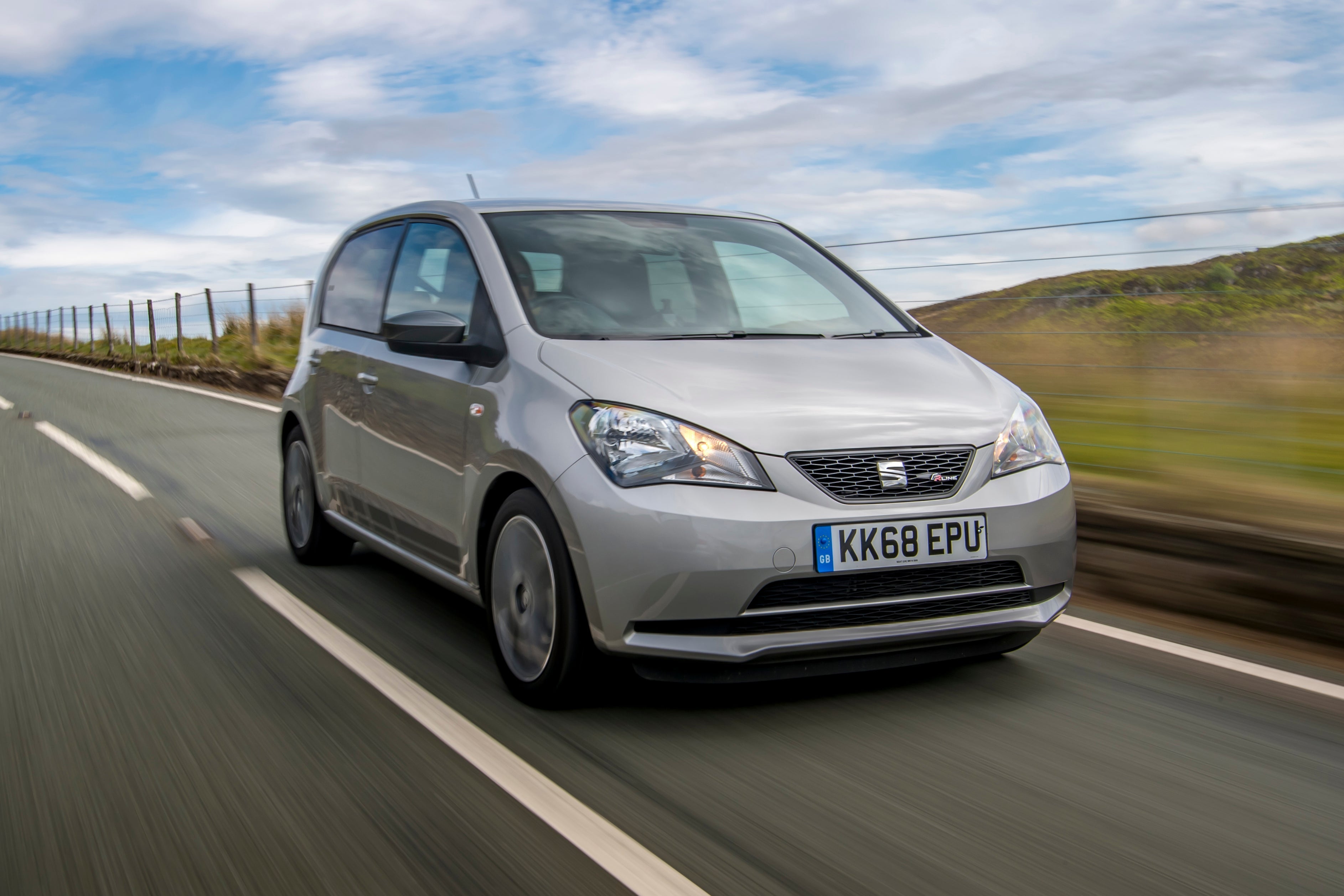SEAT Mii (2019-2019) Review
Written by Andrew Brady
Quick overview
Pros
- Feels a cut above the class standard in terms of quality
- Fun to drive and comfortable, too
- Inexpensive to run and holds its value pretty well
Cons
- Weak automatic gearbox
- Wasn't available with the 90PS turbo engine found in the Volkswagen Up
- Strict four seater only
Verdict: Is the SEAT Mii a good car?
"The SEAT Mii is a very likeable car. It can do everything you could reasonably expect it to, and also never makes you feel like it’s a compromise over choosing something bigger."

You might not remember it, but SEAT has a little history in the city car market. Stretching back to the 1980s, the Spanish firm has had an offering in this sector, spinning its own take off an existing car from its parent manufacturer.
The SEAT Mii was introduced in 2012 and bears striking similarity to the Skoda Citigo and, more importantly, the Volkswagen Up. This triumvirate of small cars was designed to offer maximum cabin space and a grown-up feel while still being easy to drive and cheap to run. It was as close to a squared-off box as you can get without it looking like a bus. At the rear, that meant a near-vertical tailgate, maximising interior space, with a long roofline and short overhangs at each end.
The SEAT Mii shared its platform, mechanicals and interior with its sister cars, while the exterior silhouette was almost identical save for a few distinctive details. With three near-identical cars from different brands, the main things that distinguished them were price and specification, with the Volkswagen Up focussing on being semi-posh and the Skoda Citigo on value, and the SEAT Mii going for a stylish approach.
Inside, the SEAT Mii kept things simple and sensible. The windows were huge and let in plenty of light, making the cabin feel airy, while the dashboard layout emphasised the feeling of space.
The instruments were also clear and attractive, with a handy trip computer in the bottom of the speedometer. It wasn't luxurious, but it brought a sense of quality, which avoided you feeling like you’ve simply bought the cheapest car you could afford.
The engine range was super-simple, too. The basic SEAT Mii powerplant was a 1.0-litre three-cylinder unit, available in 60PS and 75PS forms. Both versions had the same 95Nm torque output, and while there wasn't a great deal to choose between them, the little extra puff of the 75PS unit was worth seeking out - there were no penalties regarding fuel consumption or emissions, so it still makes sense to choose the stronger option. A five-speed manual gearbox was standard, with a straightforward, satisfying action when changing gears.
The rest of the driving experience was accomplished with a comfortable ride, light but direct steering and handling above the standard you’d expect from a car of this size and price. It was another area where the SEAT Mii’s good breeding showed through.
Looking for a used car for sale? We've got 100s of SEAT Approved Used Cars for Sale for you to choose from, including a wide range of SEAT Mii cars for sale. If you're after the EV version, you need our SEAT Mii Electric review.
Is the SEAT Mii right for you?
As is the way with almost every city car, the key factors determining if the SEAT Mii can fit in your life are the amount of space inside and the frequency of long journeys.
As a first car, it is a very appealing prospect if it falls within budget and could even pass muster as a small family car. The SEAT Mii is capable of long motorway journeys, but it’s not something you would want to do on a regular basis, just because the engine needs to be worked relatively hard to keep up.
The SEAT Mii compares favourably with its key rivals, but if you need more space from your city car, then the Hyundai i10 is probably your best bet.
What's the best Seat Mii model/engine to choose?
There's only one engine, a 1.0-litre, but this is available in two outputs: 60 or 75PS. We'd recommend the latter if you can find one in budget. We'd skim over the entry-level car, opting for either the Ecomotive or SE as these had more equipment to boot.
What other cars are similar to the SEAT Mii?
The Skoda Citigo and Volkswagen Up were about as similar as they came, sharing the same interior and exterior as the SEAT Mii, many of the same engine options and - unsurprisingly - drove similarly. When buying used, it’s worth considering all three and choosing the best car within your budget.
The Peugeot 108, Citroen C1, and Toyota Aygo triplets are all worth considering too, as they offer a similar low-cost but big value approach. They should cost a little less than the equivalent SEAT Mii, too. Another favourite in the city car sector is the Hyundai i10, which isn’t quite as nice to drive but is more spacious inside and is well-built. Similarly reliable is the Kia Picanto.
It's worth noting the 108, C1 and Aygo are no longer built, but new examples include the Fiat 500, Mini Hatchback, and the all-electric Dacia Spring.
Comfort and design: SEAT Mii interior
"It’s an unwritten rule that because a car is small and inexpensive, you have no right to be comfortable in it, which is, of course, complete nonsense. Thankfully, the SEAT Mii was designed from the beginning to accommodate actual adult humans, and didn't force its occupants to make any compromises."
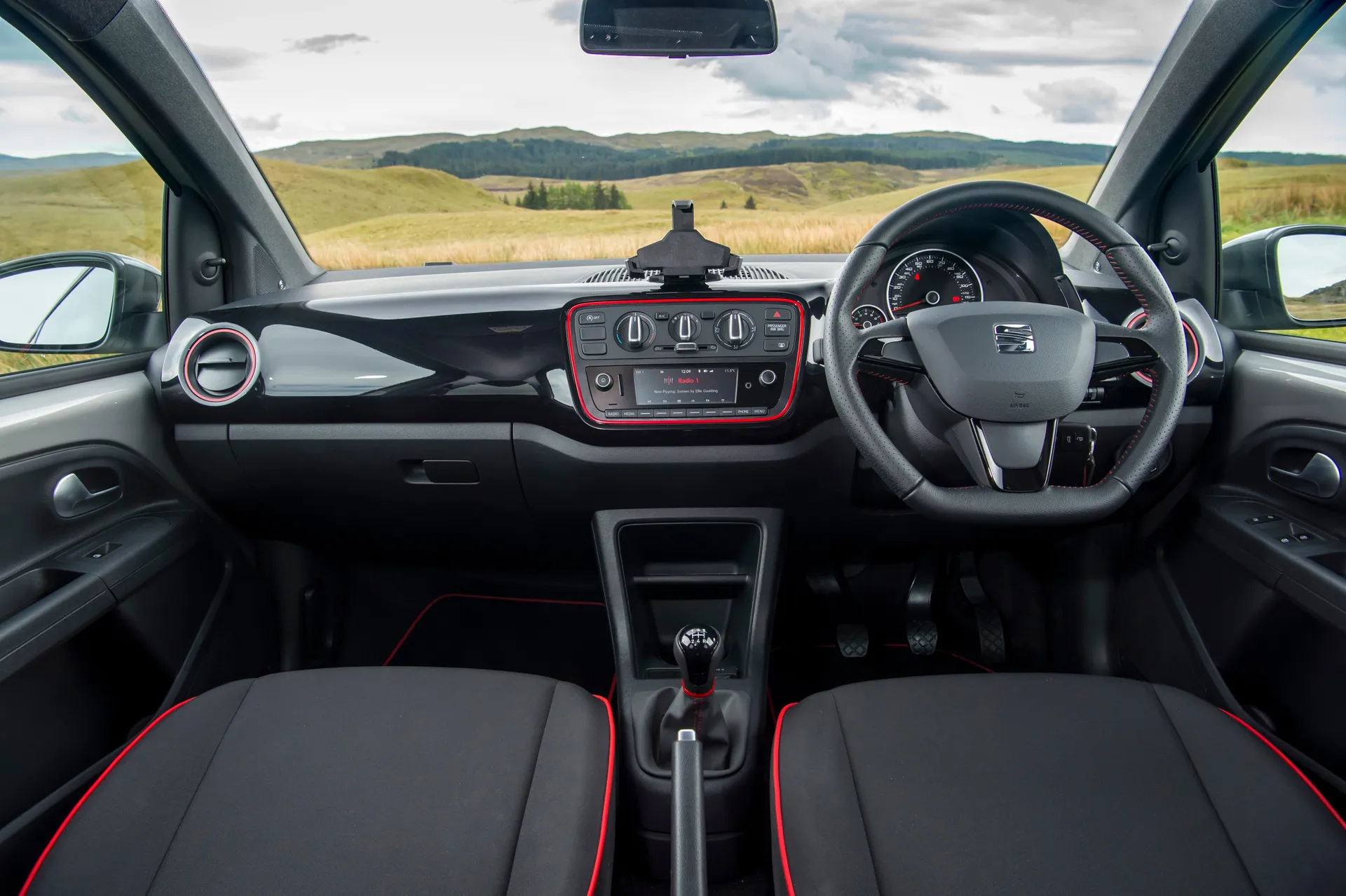
The driving position of the SEAT Mii was excellent, with a good range of adjustment too. The squared-off exterior paid dividends here, creating a good view out all around, and the near-vertical rear window made it easy to judge where the back of the car is when parking.
The SEAT Mii's cabin layout was attractively simple too, with all the major controls grouped neatly and high up on the dashboard, making it easy for the driver and passenger to access them. The same went for the instrument display, which had a large central speedometer with the smaller secondary dials at either side. You could get in and understand how it all worked and where everything was within seconds, a testament to the quality of the design.
How snazzy of an interior depends very much on what trim level you go for. The basic S model meant the typical sea of grey plastic, but there were option packs with flashes of colour, and SE models and upwards got a coloured panel across the dashboard, which was a pleasing addition.
Quality and finish
When buying a cheap car, expect it to be short on equipment and quality. Still, the SEAT Mii proved this doesn't need to be the case. Sure, plump for the basic S model, and you’re not overwhelmed with gadgets and luxuries, but the bare quality of the car still shines through.
Some of the plastics were hard, but felt tough rather than cheap, and the way the switches operated with a reassuring solidity gave off quality assurance. The same went for seat coverings, regardless of trim level, reinforcing the feeling that the SEAT Mii was built to last.
As you’d expect things got a bit nicer further up the range. In SEAT Mii SE models, you got leather on the steering wheel and gear lever, smarter seat fabrics and a coloured panel on the dashboard, while Sport models had special seat fabrics and dash panel. Later models like the SEAT Mii by Mango took this even further, with Alcantara (a synthetic suede) trim and bespoke colours. Unlike many rivals, you could actually make the Mii feel pretty posh inside, which was definitely a good thing.
Infotainment: Touchscreen, USB, sat-nav and stereo in the SEAT Mii
The infotainment in the SEAT Mii depended very much on the trim level, but also the age of the car, as SEAT changed the provision towards the end production. Initially, S models came with a basic FM/AM radio and CD player as standard, while SE Tech models and upwards (and the S as an option) had the SEAT Portable System.
This separate screen was fixed atop the dash and provided Bluetooth for streaming and calls, satellite navigation and a trip computer. It was a good system, although the fact that it was removable meant it wasn’t as secure as a built-in system.
Later SEAT Mii models ditched this idea for integrated Bluetooth, a phone cradle and a dedicated DriveMii app, offering much the same features and more but direct from your smartphone. Of the two, the later system is preferable, as apart from anything it will benefit from regular updates and the ease of use. If you go for an earlier model, make sure the seller includes the Portable System if it was originally fitted.
Space and practicality: SEAT Mii boot space
The SEAT Mii manages to disguise its box-like profile pretty well from the outside (the SEAT Mii measures 3557mm long and 1645mm wide), and with that magic trick successfully pulled off, you can reap the benefits when you climb aboard. It’s almost a shock to discover how spacious it is in the front - tall drivers who might not have relished the idea of looking like Noddy can breathe easily.
Any size of driver can get comfortable behind the wheel, even though the steering only adjusts for reach, with plenty of head and legroom. Shoulder room is decent, too, despite this being a relatively narrow car. The feeling of space is helped by the slim dashboard and plenty of light entering the cabin.
There’s not quite so much space in the rear in the SEAT Mii, but it’s better than some of the competition. The rear seats are mounted a little higher than those in the front, so there’s a little less headroom, while legroom is understandably less plentiful. Still, there’s enough space here to accommodate willing adults for shorter journeys, and for most sizes of children, you shouldn’t have any problems.
Five-door models make access to the rear a good deal easier, although, as long as you’re reasonably able-bodied, getting into the back of the three-door shouldn’t be too difficult. It is worth bearing in mind, however, that the Mii is a strict four-seater, with a rear bench designed for two and a pair of seatbelts rather than three, which may rule it out for some buyers.
Boot space for the SEAT Mii is also impressive, with 251 litres on offer - a solitary litre fewer than the Hyundai i10 and more than the Renault Twingo and Toyota Aygo. Drop the rear seats, and this can be expanded to a minivan-like 959 litres. There’s an adjustable boot floor, too, so you can stash more valuable items out of sight.
There’s a useful amount of storage space in the cabin too, including decently-sized door bins that can hold a 1-litre bottle, a cubby in front of the gearlever - with an insert designed to hold a smartphone if you wish - plus a larger than average glovebox all make it easier to live with.
All SEAT Miis are fitted with a tyre repair kit as standard, and a spare wheel of any variety is not available as an option.
Handling and ride quality: What is the SEAT Mii like to drive?
"It’s understandable to have low expectations of a car in this class, but the Mii is proof that a low-cost car doesn’t have to be lacking in any of the key areas."
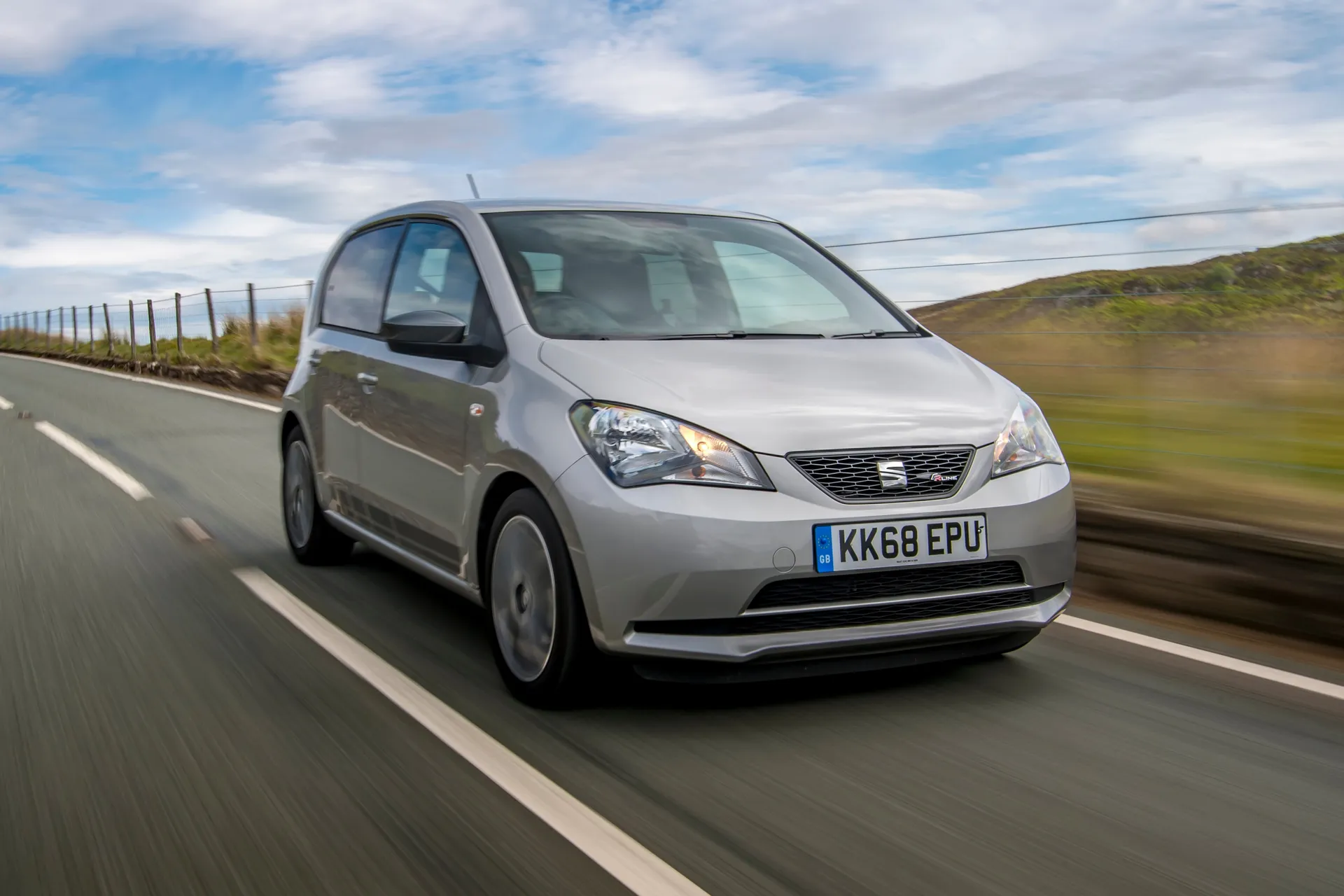
The steering felt a step above the class standard. It was light but not too much at speed, but more importantly, it felt satisfyingly accurate, so you knew exactly what the car was doing without having to think about it. Whether you were cruising on the motorway or hacking through a traffic jam, the Mii made you feel like you had full control, which inspires confidence.
The ride quality was also impressively composed and refined. It was no limousine - it had a short wheelbase and so it couldn't hide everything - but it was amongst the best in its class, soaking up plenty of imperfections regardless of size and severity.
It was important to note that some models of SEAT Mii got stiffer sports suspension - the FR-Line in particular - which did impact on the ride quality a little, so unless you plan to treat it like a little hot hatch it would be best to avoid models fitted with this option.
Even more so because the regular Mii handled with composure and assurance with a healthy slice of fun. The accuracy of the steering helped, and even with the softer of the two suspension setup, body roll was kept in check unless you were really pressing on and it was safe without being dull.
What engines and gearboxes are available in the SEAT Mii?
There wasn't much to choose from regarding engines and gearboxes with the SEAT Mii. The default was a 1.0-litre, three-cylinder petrol engine regardless, which left power output as a choice 60PS or 75PS. There wasn't a huge amount between the two, with identical claimed combined fuel consumption and CO2 emissions whichever version you choose.
The 60PS unit was fine, and could still cut it on the motorway, but we'd recommend the 75PS version - it’ll make life a little easier - it could hold a higher speed more comfortably and was a little quicker in acceleration, too.
Sadly the Mii was not available with the 90PS turbocharged engine that you could get in the Volkswagen Up, which brought a whole other level of performance while still keeping fuel consumption low. There was an electric Seat Mii, but this was discontinued. Read our dedicated SEAT Mii Electric review for more info.
Like many of its rivals, the SEAT Mii’s engine options were three cylinders, and while that meant a fraction more noise than four cylinder offerings, it was a more pleasant car to drive as a result. The three-cylinder unit cruised with reasonable hush and refinement, yet was happy to be revved to the stars if you felt so inclined.
The standard five-speed manual was fine in the SEAT Mii. It had well-chosen ratios, making it easier to get up to speed yet could cruise comfortably on the motorway. The automatic was an electrically-operated manual, and while that sounds like a good idea, it actually spoiled the driving experience - so much so it was binned off before production stopped.
Refinement and noise levels
The solid build helped the Mii's case - this car was constructed from decent materials - and although the three cylinder engine was busy, you got a pleasing thrum coming through rather than an excessive amount of noise.
The three cylinder arrangement also helped cut down on vibrations, too, and there was no noise difference with the 60PS versus the 75PS version.
Small wheels on the SEAT Mii meant skinny tyres so tyre noise was reasonably low on most surfaces, while wind noise wasn't an issue. At higher speeds the began making itself known, but not unreasonably so. You could take on a lengthy motorway journey without having to stop frequently to give your ears a break.
Safety equipment: How safe is the SEAT Mii?
The SEAT Mii was awarded two ratings from Euro NCAP: one from when the car was introduced in 2011, and again in 2019 when it was relaunched as a pure electric model. It’s also important to note that the Mii itself was not tested, but the Volkswagen Up instead. Euro NCAP looked at the similarities in design and equipment and decided a separate test was not required.
In the 2011 test, the SEAT Mii scored an impressive five stars. It achieved 89 per cent for adult protection and 80 per cent for child protection, and although pedestrian mitigation was quite low at 46 per cent - a result of being such a short car - it managed a high 86 per cent for safety assist. Standard equipment included front and side airbags, seat belt pretensioners and load limiters and ISOFIX child seat mounting points, hill hold assist and tyre pressure monitoring.
Initially, SEAT Mii models were not fitted with ESC as standard, but it was available as an option that also include City Safety Assist, but this was changed later in the car’s life so ESC was standard with City Safety Assist the sole option. If you are looking at a used car check the specification carefully to see if your car is the right age for standard ESC or it has been fitted from the options list.
MPG and fuel costs: What does a SEAT Mii cost to run?
"Expect good things from the SEAT Mii in terms of running costs. Fuel consumption was declared by the old NEDC system, and depending on the model, you can expect between 62mpg and 68mpg combined. In the real world, expect to beat 50mpg without trying too hard."
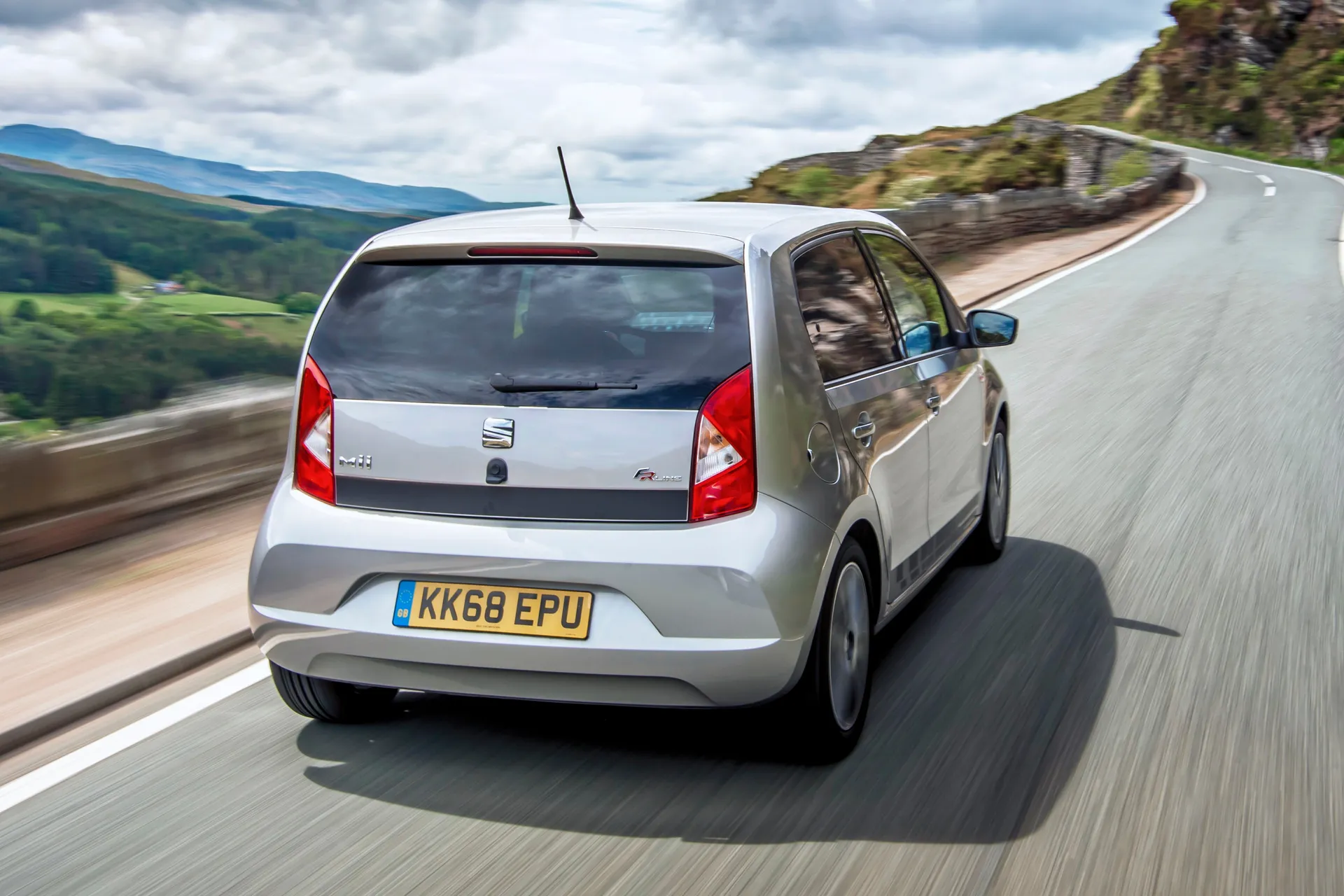
The Seat Mii's unpleasant automated manual gearbox also drank more fuel, which is another reason to avoid it altogether.
Early Ecomotive models had different suspension and stop/start for superior fuel economy. This system was dropped and was later included on all models so 68 mpg could be achieved.
SEAT Mii reliability and warranty
When released, the SEAT Mii scored 8 out of 10 overall in the HonestJohn.co.uk Satisfaction Index, which was a little underwhelming. That said, it scored highly for reliability, achieving 9 out of 10, with most users taking issue with the repair costs and the car's performance.
As a manufacturer, Seat came in 18th in the latest HonestJohn.co.uk Satisfaction Index, with a satisfaction score of 81%.
Seat Mii insurance groups and costs
Thanks to strong safety performance and equipment, the SEAT Mii manages to squeeze down into seriously low car insurance groups.
Most models drop comfortably into group 2E, making the SEAT Mii one of the cheapest cars to insure, while the most extravagant FR Line model with the more powerful engine is still only 4E. That means manageable premiums (probably) if you’re a new driver - it’s definitely one of the best choices for a first timer because of this. Older and more experienced drivers can enjoy insuring their SEAT Mii for peanuts alongside the miserly fuel bills.
VED car tax: What is the annual road tax on a SEAT Mii?
Like the Volkswagen Up, the Seat Mii's engines were efficient and emitted low C02, meaning tax was relatively cheap.
Under the new tax laws, all cars registered before 2017 will cost £20 per year to tax. Some Mii's were tax exempt, but as of April 2025, Band A will merge into B. Cars registered after April 2017, will fall to the standard rate of £195 regardless.
Seat Mii price
"With almost ten years of production there are plenty of used SEAT Miis on the market. The last of the petrol-powered versions were new in 2019, and there are plenty of examples still in the first flush of youth."
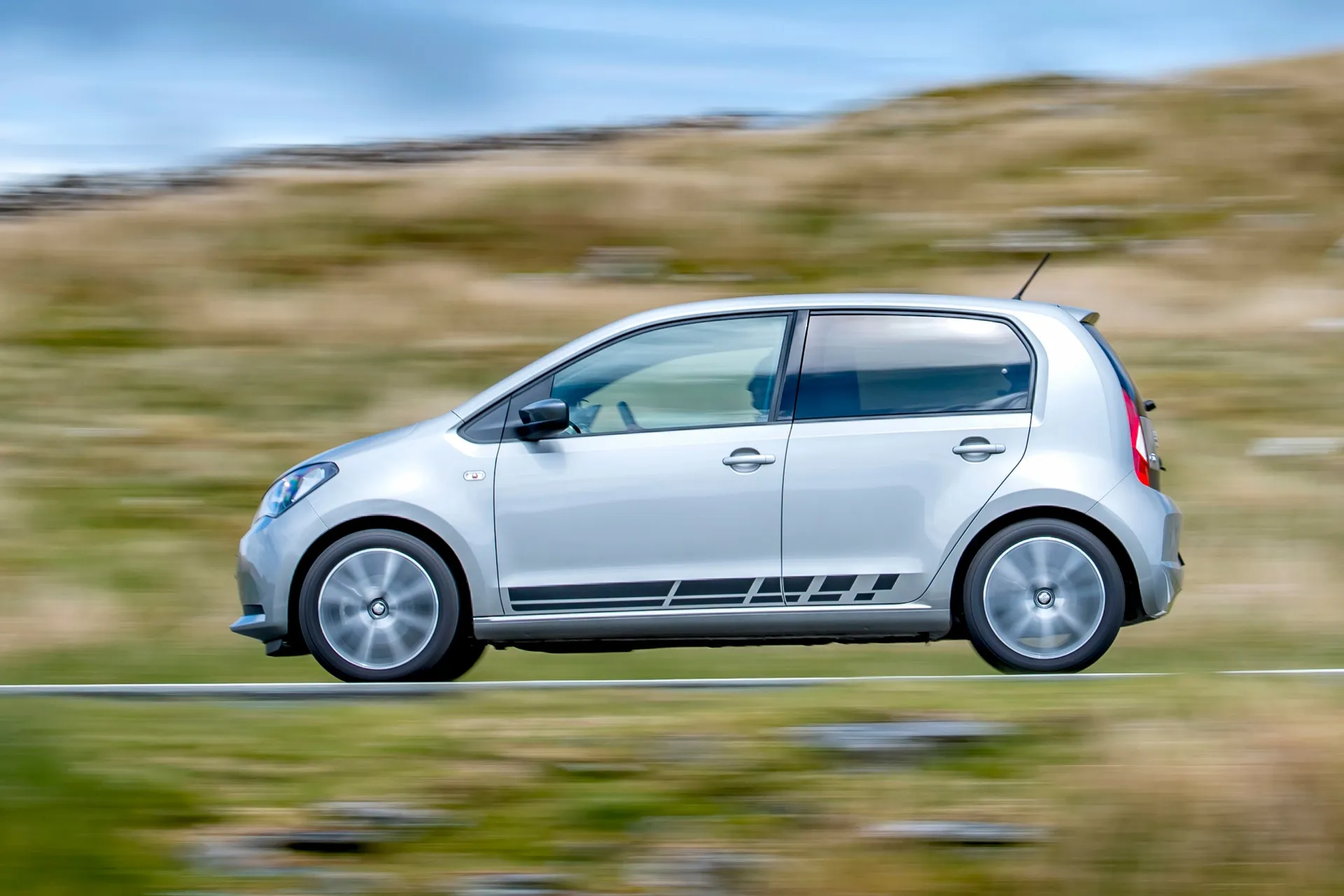
Getting behind the wheel of a Seat Mii costs just £1,800. Parting with this much gets you an early car with sub-100,000 miles. We'd recommend spending around £4,000 as this means a newer car with sub-50,000 miles.
Have £10,000 to spend? There's the 160-mile range Seat Mii electric. Late 2019 petrol cars with circa 5,000 to 14,000 miles demand just under £9,000.
Trim levels and standard equipment
From the original model range, we would suggest passing over the SEAT Mii S model. It had the basics but nothing more, and was less attractive to buyers as a result. The ideal starting point is either the Ecomotive or SE models, both had air con, electric front windows and remote central locking. The SE also had a leather steering wheel and gear-knob, smarter interior trim and alloy wheels.
Of the models and special editions introduced later on, the Toca and the I-TECH are recommended because they added the SEAT Portable System as standard. For the full luxury experience (kind of), the SEAT Mii by Mango was stylish and packed with tasty equipment.
Ask the heycar experts: common questions
Is the SEAT Mii a good car?
Has the SEAT Mii been discontinued?
Can you fit child seats in the SEAT Mii?
Get our latest advice, news and offers
Keep me updated by email with the latest advice, news and offers from heycar.
By submitting you agree to our privacy policy
